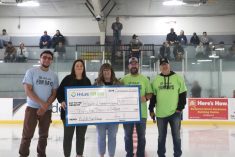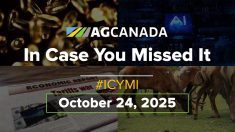SASKATOON (Staff) – There were 10 panelists but only nine signatures on the final report of the Canada-U.S. Joint Commission on Grains.
Alan Bergman, a panel member and president of the North Dakota Farmers Union, refused to sign the 219-page document.
In an interview last week, the North Dakota wheat grower said he couldn’t sign for two reasons: The report failed to propose a way to manage cross-border trade issues, and it relied too much on free market forces to bring fairness and prosperity.
Bergman said the commission was created in response to complaints from U.S. farmers in northern states who were unhappy about the increasing volume of Canadian wheat imports.
Read Also

New Alberta funding for program hopes to further unlock agritourism industry in province
Alberta Farm Fresh Producers Association is launching a new initiative thanks to $300,000 of provincial funding to bolster Alberta’s smaller scale family farms and agritourism sector.
“That in my mind was the primary objective and yet we were unable to reach a consensus on that very point of what should be done at the border,” he said.
Consultative committee
The panel recommended setting up a consultative committee of industry officials from both countries to monitor cross border trade issues and try to prevent serious problems.
Bergman said that while he supported that idea during the deliberations, he was disappointed the panel didn’t also set specific limits on the amount of grain that can cross the border.
“In our system that’s the only way farmers can really plan, and know that there is going to be an opportunity to market grain and not be usurped by imports,” he said. “The only way is to know what the rules are.”
Bergman also rejects what he calls the report’s reliance on free market principles, a belief that if market forces are left unfettered, everyone will be better off.
“I’ve never agreed with that. The marketplace in production agriculture has always had a difficult time in an unregulated environment. I could not accept the panel saying that’s what should be done.”














